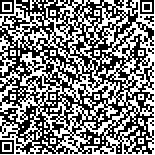胡淑珍,顾旭东,吴华,等.骨盆辅助式康复机器人训练对脑卒中偏瘫患者下肢功能及骨盆运动学的影响[J].中华物理医学与康复杂志,2019,41(4):269-273
扫码阅读全文

|
| 骨盆辅助式康复机器人训练对脑卒中偏瘫患者下肢功能及骨盆运动学的影响 |
|
| |
| DOI:DOI:10.3760/cma.j.issn.0254-1424.2019.04.007 |
| 中文关键词: 骨盆 运动学 机器人 康复 脑卒中 |
| 英文关键词: Pelvis Kinematics Robots Rehabilitation Stroke |
| 基金项目:浙江省医药卫生科技计划面上项目(2019KY217);浙江省科技厅公益性技术应用研究项目(LGF18H170006);嘉兴市科技计划项目(2017AY33033) |
|
| 摘要点击次数: 6549 |
| 全文下载次数: 7236 |
| 中文摘要: |
| 目的 探讨骨盆辅助式康复机器人训练对脑卒中偏瘫患者步态运动学的影响。 方法 采用随机数字表法将40例脑卒中偏瘫患者分为观察组及对照组,每组20例。2组患者均给予常规药物治疗及康复训练,观察组患者在上述干预基础上辅以骨盆辅助式康复机器人训练,每周训练6次,每次训练20 min,持续训练8周。于入选时及治疗8周后分别采用简化Fugl-Meyer下肢运动功能量表(FMA-LE)评定患者下肢运动功能,采用Berg平衡量表(BBS)评定患者平衡功能,通过Biodex Gait Trainer-2型步态分析系统检测患者步速、步长,采用骨盆辅助机器人系统检测患者骨盆旋转角、骨盆侧倾角、骨盆竖直移动及骨盆侧向移动等运动学参数。 结果 治疗后观察组患者FMA-LE评分、BBS评分、步速、健侧步长、患侧步长分别为(21.40±4.38)分、(39.45±4.47)分、(61.50±17.92)cm/s、(49.25±15.13)cm和(48.65±11.49)cm,均较治疗前及对照组治疗后明显改善(P<0.05)。治疗后观察组患者骨盆旋转角、侧倾角、竖直移动及侧向移动等运动学参数分别为(9.93±1.92)°、(15.57±1.68)°、(12.09±1.13)cm和(8.92±3.26)cm,均较治疗前及对照组治疗后明显改善(P<0.05)。 结论 在常规康复干预基础上辅以骨盆辅助式康复机器人训练,能进一步提高脑卒中偏瘫患者骨盆控制能力,改善步行功能及平衡能力,从而促进患者下肢运动功能恢复。 |
| 英文摘要: |
| Objective To explore the effect of robot assistance on the gait kinematics of hemiplegic persons after a stroke. Methods Forty hemiplegic stroke patients were randomly divided into an experimental group and a control group, each of 20. Both groups were given routine neurological medication and rehabilitation training, while the experimental group was additionally provided with 20 minutes of robot-assisted gait training daily, six times a week, for 8 weeks. Before and after the intervention, both groups′ motor function, balance, step length and pace were evaluated, as well as their pelvic rotation angles, side inclination, vertical displacement and lateral displacement. The Fugl-Meyer assessment for the lower extremities (FMA-LE) was used along with the Berg balance scale (BBS), the gait analysis system of Biodex Gait Trainer-2 equipment. Results After the treatment, the average FMA-LE score, BBS score, pace and step length of the experimental group were all significantly better than the before the treatment and significantly better than the control group′s averages after the treatment. The improvements observed in the pelvic rotation angle, side inclination, vertical displacement and lateral displacement were all significant. Conclusion Robot assistance can usefully supplement routine rehabilitation training after stroke. It can improve control of the pelvis, enhance walking and balance and generally improve the motor function of the lower extremities. |
|
查看全文
查看/发表评论 下载PDF阅读器 |
| 关闭 |
|
|
|